VMT and Gasoline trends
Two issues to be addressed:
The two major variations in the VMT time series are

Log VMT is then seasonally corrected using this curve, and converted back to VMT by applying exp:
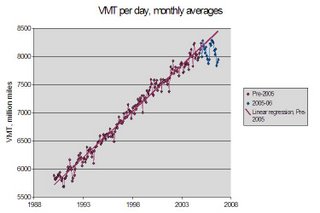
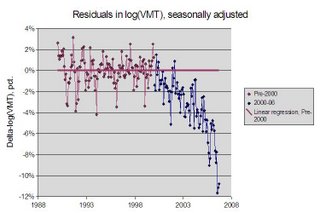
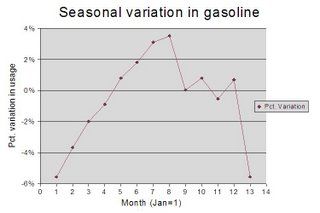
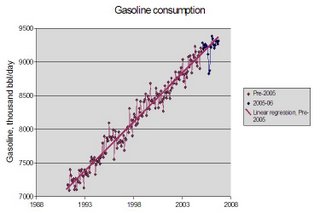
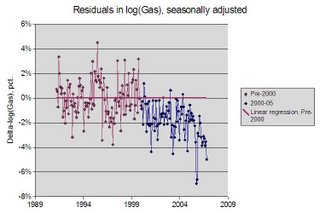
- How are VMT (and gasoline consumption) reacting to high petroleum prices?
- Is gasoline consumption a good proxy for VMT?
The two major variations in the VMT time series are
- A long-term secular increase,
- An annual variation with maximum in summer, minimum in winter, and an amplitude of nearly 20%.

Log VMT is then seasonally corrected using this curve, and converted back to VMT by applying exp:





